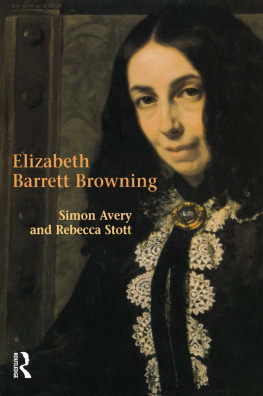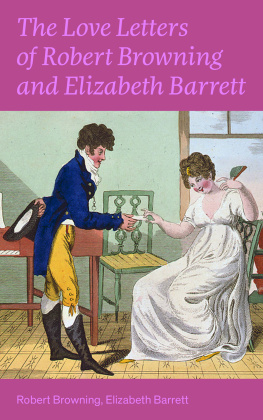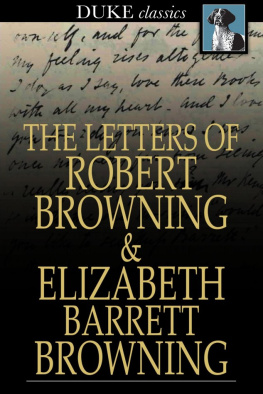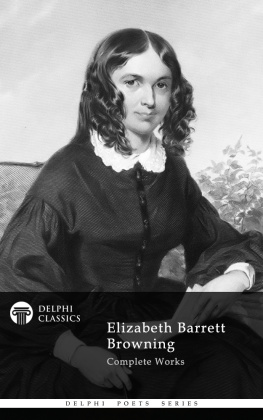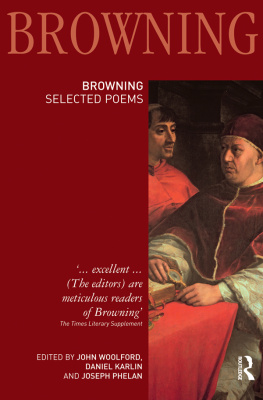Contents
Guide

ALSO BY FIONA SAMPSON
Come Down
Stone Moon with Alison Grant
Ilmarinen and the Fire with Louisa Amelia Albani
In Search of Mary Shelley: The girl who wrote Frankenstein
Limestone Country
Lyric Cousins: Poetry & musical form
The Catch
Coleshill
Night Fugue: Selected Poems
Beyond the Lyric: A map of contemporary British poetry
Music Lessons: The Newcastle Poetry Lectures
Rough Music
Poetry Writing
Attitudes of Prayer with Tadashi Mamada
Common Prayer
On Listening: Selected Essays
Writing: Self and Reflexivity with Celia Hunt
The Distance Between Us
Folding the Real
The Healing Word
Birthchart with Meg Campbell
AS EDITOR
Percy Bysshe Shelley
A Century of Poetry Review
Creative Writing in Health and Social Care
A Fine Line: New Poetry from Central and Eastern Europe with Jean Boase-Beier & Alexandra Buchler
The Self on the Page with Celia Hunt
TWO-WAY MIRROR
The Life of Elizabeth Barrett Browning
FIONA SAMPSON

Copyright 2021 by Fiona Sampson
First American Edition 2021
All rights reserved
For information about permission to reproduce selections from this book, write to Permissions, W. W. Norton & Company, Inc., 500 Fifth Avenue, New York, NY 10110
For information about special discounts for bulk purchases, please contact W. W. Norton Special Sales at or 800-233-4830
Jacket design: Steve Attardo
Jacket artwork: Elizabeth Barrett Browning (engraving), 1876, J. T. Vintage / Bridgeman Images
Library of Congress Cataloging-in-Publication Data
Names: Sampson, Fiona, author.
Title: Two-way mirror : the life of Elizabeth Barrett Browning / Fiona Sampson.
Description: First American edition. | New York, NY : W. W. Norton & Company, 2021. | Includes bibliographical references and index.
Identifiers: LCCN 2021004103 | ISBN 9781324002956 (hardcover) | ISBN 9781324002963 (epub)
Subjects: LCSH: Browning, Elizabeth Barrett, 18061861. | Poets, English19th centuryBiography.
Classification: LCC PR4193 .S26 2021 | DDC 821/.8 [B]dc23
LC record available at https://lccn.loc.gov/2021004103
W. W. Norton & Company, Inc., 500 Fifth Avenue, New York, N.Y. 10110 www.wwnorton.com
W. W. Norton & Company Ltd., 15 Carlisle Street, London W1D 3BS
For Peter
last, an amethyst.
Contents
Elizabeth Barrett Brownings family called her Ba throughout her life; Robert Browning took up the habit. But for all its affection, this diminutive is redolent of the way shes been diminished, both personally and poetically, in popular accounts. The poet signed herself EBB, and this shorthand is a godsend to researchers. But initials arent a name, just a slightly dehumanising, paralegal formula. So Ive chosen the reasonable onlookers position and call my protagonist Elizabeth from Book 2, where she comes of age. Other family members are called by the names her own usage settled on: Papa, Treppy, Uncle Sam, Stormie; but not Addles for Henrietta.
In refusing the premise of slavery, I wont accept that people are slaves or can be property. Where people in this story are enslaved, thats how I refer to them; I use quote marks to indicate contemporary usage of buying and owning without accepting the terms.
I am extremely grateful to Jill Bialosky at W. W. Norton, Cecily Gayford at Profile and Markus Hoffmann at Regal Hoffmann Associates for this commission. My gratitude also goes to the Society of Authors for a Writers Award, and to Archipelago Publishing House, Dajana Djedovi and the Museum of Language and Letters at Tri for a residency, which enabled me to work on this book. Id like to thank my agent Sarah Chalfant for her insightful guidance and the extraordinary fillip of her support; Susanne Hillen for her consummate copy-edit; and above all and always, my husband and first reader, Peter Salmon, for putting up with the nineteenth-century women who have taken residence with us.
Ive benefited hugely from the generosity of the Provost and Fellows of Eton College, who have granted permission for quotation from the unpublished Browning letters as well as image reproduction rights. I would like to thank Michael Meredith, Browning scholar and College Librarian Emeritus, for his ready intellectual hospitality.
This book wouldnt have been a realistic possibility without the mighty, exemplary and pioneering work of Philip Kelley, Browning scholar and advocate, including the monumental and still-growing corpus of The Brownings Correspondence , some of it co-edited with Ronald Hudson, Edward Hagan and Scott Lewis, published by Wedgestone Press. Now largely digitalised and freely available online, the Correspondence is the indispensable Browning resource, and my references follow its cataloguing system throughout: www.browningscorrespondence.com. Since 1979, the National Endowment for the Humanities, an independent United States federal agency, has supported the Brownings Correspondence Project with twenty-one grants totalling $3.612 million: for this visionary support everyone with any interest in the Brownings and their work must be profoundly grateful.
From the outset, Philip Kelley has been a truly generous correspondent, and Im most grateful to him for welcoming me into the community of EBB obsessives. More, he has with extraordinary generosity read this book in manuscript, correcting errors and supplying illuminating details and connections from his wealth of knowledge: an act of exceptional support from a world-leading expert to a colleague hes never met. Such errors as remain are all my own.
Frontispiece:
From within
understand
That life develops from within.
In my favourite portrait of Elizabeth Barrett Browning she simultaneously turns away and looks back over her shoulder at us. Of course in one sense every historical figure does this: glancing over their shoulder towards the future where were watching them, even while they face away from us into their own time. But Barrett Browning makes the gesture particularly provocative. Her wide, sensual mouth dips and rises in a curly bracket. Sceptical, even teasing, her gaze has a directness that seems startlingly modern.
Which is an irony, since its an image that has been constructed by thoroughly old-fashioned means. The frontispiece for the fourth British edition of her bestselling verse novel Aurora Leigh is an engraving after an ambrotype taken specifically for this purpose. On the afternoon in September 1858 when a shutter falls on the poets half smile, in a stuffy studio on Le Havre harbour-front, photography is understood to be neither artistic, nor detailed, enough for portraiture. It will be another half-dozen years before Julia Margaret Cameron starts to produce her famous, markedly Pre-Raphaelite images of friends and family. And so the portrait that eventually results from this sitting wont be created by the photographer, but by a founder member of the Pre-Raphaelite Brotherhood itself.
Dante Gabriel Rossetti is a friend of EBB, as his celebrated subject likes to style herself, and of her husband and fellow poet Robert Browning. Hes a poet himself, and from its outset a decade ago the Brotherhood has placed literature, philosophy and the book arts illustration, fine printing, binding at the heart of its work. This commitment is combined with a personal acquaintance that surely makes Rossetti the safest of hands for the urgent refashioning of Barrett Brownings public image.



